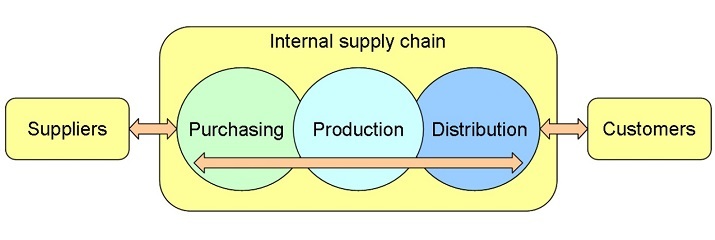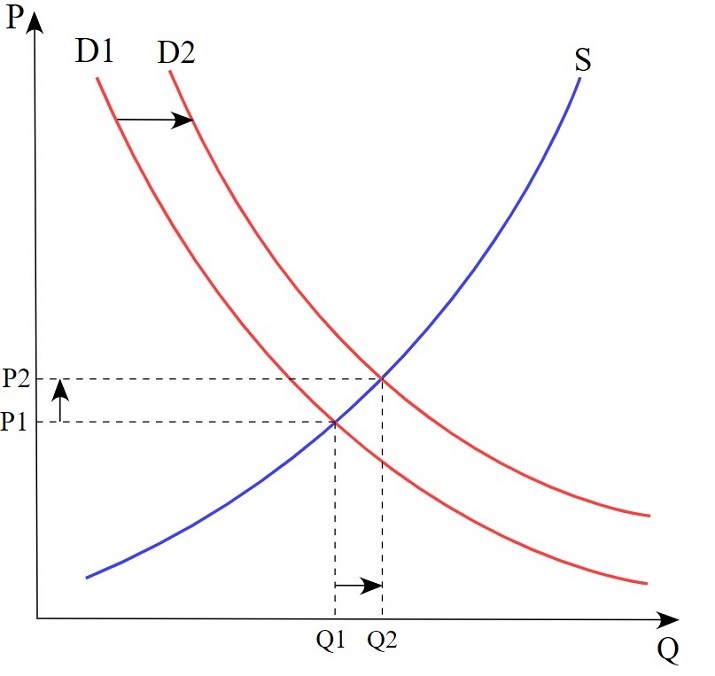
 Data Structure
Data Structure Networking
Networking RDBMS
RDBMS Operating System
Operating System Java
Java MS Excel
MS Excel iOS
iOS HTML
HTML CSS
CSS Android
Android Python
Python C Programming
C Programming C++
C++ C#
C# MongoDB
MongoDB MySQL
MySQL Javascript
Javascript PHP
PHP
- Selected Reading
- UPSC IAS Exams Notes
- Developer's Best Practices
- Questions and Answers
- Effective Resume Writing
- HR Interview Questions
- Computer Glossary
- Who is Who
Market Supply Curve and its Determinants
Introduction: What is Supply?

Supply is the number of goods and services a producer or supplier is willing and able to bring to a market for a given price. The amount of supply is dependent upon the availability of stocks and the determiners of supply who drive it in the market. In other words, supply is governed by demand.
Ideally, it is the consumers who determine if more supply is required in a market through their ability and willingness to purchase more of a product. This is known as the demand of a market.
When there is equality between supply and demand, it is known as market equilibrium. At the point of market equilibrium, there is no excess or shortage of supply. When supply is at equilibrium, the consumers increase the utility and suppliers earn optimal profits. If supply is increased beyond this limit, there will be excess supply in the market and consumers will reduce utility. Therefore, the demand will fall down and the price will come down which will bring supply to equilibrium again.
Market Supply Curve
The market supply curve is a graphical representation of the price and the quantity of a product a supplier is able and willing to supply. The price is usually plotted on the Y-axis and the quantity of supply is plotted on the X-axis.
In most cases, the supply curve has a slope upward rising from left to right because the price and supply are directly related to each other. In other words, the slope is due to the fact that when the price rises in the market, the amount of supply also increases. However, in most cases, such a slope is considered when other factors remain constant. It is said to have certain ceteris paribus factors remaining constant.

Determinants of Market Supply Curve
The market supply curve is dependent on certain factors which are the following
Cost of inputs
The cost of inputs or the parts required to make a product influences the supply of a product. When the price of such inputs goes down, the producers tend to increase the supply while in the case when the price of inputs goes up, the productions go down.
For example, if the price of computer parts goes down, the computer manufacturers increase production because it provides them with more profits. In case prices go higher, they reduce the number of outputs or supply.
Technology
Technological advancement increases the level of productivity as newer technologies often reduce the cost of production of a product. As the profitability goes up due to a reduction in the cost of inputs due to advancements in technology, producers make more products when new technology hits the markets. In such a case the supply curve rises with an increasing supply of goods or services.
Number of sellers
The number of sellers is also a determinant of the amount of supply. When the number of suppliers increases, the supply increases while when the number of suppliers go down, the amount of supply decreases.
For , if there are two fruit sellers in the market, the availability of fruits will usually be more when one leaves the market and there is only one seller in the market.
Price of substitutes
Substitutes are similar products that have almost similar features to an original item. When the price of substitutes increases, the price of the original product tends to fall down. This happens because when the price of substitutes increases, it becomes more profitable to produce them.
For example, if apples become more profitable to produce, the producers will shift to apple cultivation more than any other fruit because they will be more due to apple sales. Therefore, the production or supply of apples will increase in comparison to other fruits.
Future Expectations
Future expectations may also drive the prices and supply of products.
For example, if the price of an item is expected to increase in the future, suppliers may stockpile the inventory, supplying less of the products in present. In such cases, suppliers value the increased profits that can be earned by selling the products in the future.
Government policies
Government policies influence the supply to a large extent. If the government bans some items, the production of those items must be stopped by producers. However, if the profits earned from a product decrease due to government legislation, the supply of the product will become limited. Therefore, governments play a key role in managing supplies of products.
Natural conditions
Natural conditions are also effective in determining the supply of a commodity. This is especially applicable to agricultural products. Usually, during times of natural calamities, the supply of products goes down while in situations where the natural conditions augment the production, the supply goes up. Droughts, floods, wildfires, etc. are some examples that lead to a lower supply of resources.
Supply curve shift
The factors mentioned above that affect the supply of a product may result in a complete shift of the curve to the left or right. For example, technological advancements, lower cost of inputs, and favorable government legislation drive the curves to the right while the opposite of these factors shifts the supply curve to the left.
Key takeaways
Supply is the number of goods and services a producer or supplier is willing and able to bring to a market for a given price.
It is the consumers who determine if more supply is required in a market through their ability and willingness to purchase more of a product.
Consumers' ability and willingness to buy products are known as the demand of a market.
The market supply curve is a graphical representation of the price and the quantity of a product a supplier is able and willing to supply.
In most cases, the supply curve has a slope upward rising from left to right because the price and supply are directly related to each other.
The market supply, and therefore, the market supply curve is dependent upon certain factors, such as the cost of inputs, advancement in technology, natural conditions, etc.
Conclusion
Like the demand curve, a market supply curve is also an important tool for economists and businesses. It shows the increase or decrease in demand with price changes and hence along with the demand curve can show at which price the products will achieve the equilibrium. This can help in setting prices. So, it is very important to learn about supply curves.
FAQs
Qns 1. What is supply? What is it dependent upon?
Ans. Supply is the number of goods and services a producer or supplier is willing and able to bring to a market for a given price. The amount of supply is dependent upon the availability of stocks and the determiners of supply who drive it in the market.
Qns 2. Name three factors that may affect the supply curve.
Ans. The supply curve is dependent upon the cost of inputs, the advancement of technology, and the number of sellers.
Qns 3. Can the supply curve shift positions?
Ans. Yes. The supply curve can shift its position due to the effect of conditions that affect supply.

